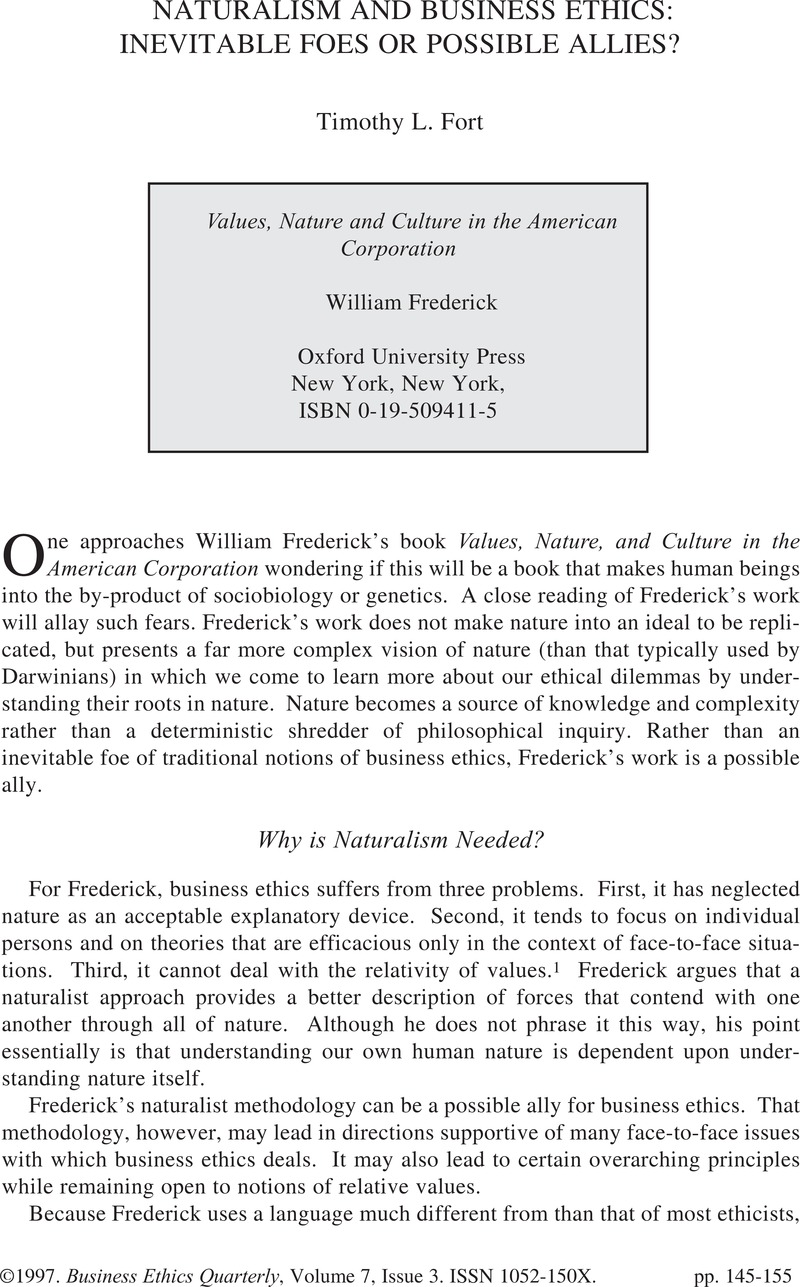Crossref Citations
This article has been cited by the following publications. This list is generated based on data provided by Crossref.
Cheung, Kwok Tung
2008.
On a Recent Naturalism Debate in Business Ethics – from a Philosophy Point of View.
Journal of Business Ethics,
Vol. 82,
Issue. 4,
p.
889.
Kurland, Nancy B.
and
Zell, Deone
2011.
Regulating Water: A Naturological Analysis of Competing Interests Among Company, Town, and State.
Business & Society,
Vol. 50,
Issue. 3,
p.
481.





